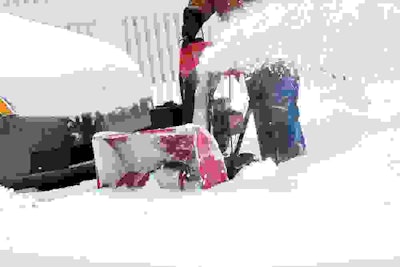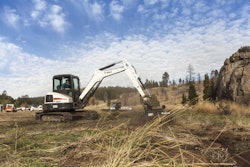
Winter is on its way, and that has never been more apparent as temperatures across the United States plunge all over.
The Outdoor Power Equipment Institute has provided the following safety tips for landscapers as they gear up snow removal equipment.
Make sure the snow blower is in good working order, before the first flakes fall. Change the oil. Install a new spark plug and inspect the belts to be sure they are in good working order. If you forgot to drain the fuel last winter before storing your snow blower, drain the tank now. Check the auger (always in the “off” position) and adjust any cables. Make sure it starts.
Review the owner’s manual. Read the owner’s manual and review safe handling procedures from the manufacturer.
Before it snows, clear the pathways you intend to use. Snow can sometimes hide objects that might clog the chute of a snow blower, or cause damage to the machine or people nearby. Remove doormats, sleds, boards, wires and other debris from the pathways you intend to clear.
Use the right fuel. It’s important to have the proper fuel on hand, as filling stations may be closed if there is a power outage after a snowstorm. Store fuel properly and buy the type of fuel recommended by your equipment’s manufacturer. It is illegal to use any fuel with more than 10 percent ethanol content in outdoor power equipment.
Handle fuel carefully. Use non-spill containers with spouts. Fill up the fuel tank outside before you start the engine and while the engine is cold. Never add fuel to a running or hot engine. Store fuel in a clean, dry, ventilated area, and never near a pilot light, stove or heat source. Never smoke around fuel.
Dress properly for the job. Wear adequate winter garments and footwear that can handle slippery surfaces. Put on safety glasses, and avoid loose fitting clothing that could get caught in moving parts. Tie back long hair.
Operate your snow blower in visible conditions. Never operate the snow blower without good visibility or light.
Aim carefully and avoid people and cars. Never throw snow toward people or cars. Do not allow anyone to stand in front of the snow blower. Keep children or pets away from the snow blower when it is operating.
Use extreme caution on slopes and hills. Do not clear snow across the face of slopes. Be cautious when changing directions on slopes. Do not attempt to clear steep slopes.
Turn off your snow blower if you need to clear a clog or repair it. If you have to repair your machine, remove debris or unclog built up snow, always turn off your snow blower. Wait for all moving parts to come to a complete stop. Disconnect the spark plug wire or power cord.
Never put your hands inside the auger or chute. Use a clean out tool (or stick) to unclog wet snow or debris from your snow blower. Your hands should never go inside the auger or chute.
Know where your cord is. If you have an electric powered snow blower, be aware of where the power cord is at all times. Avoid tripping. Do not run over the power cord.









